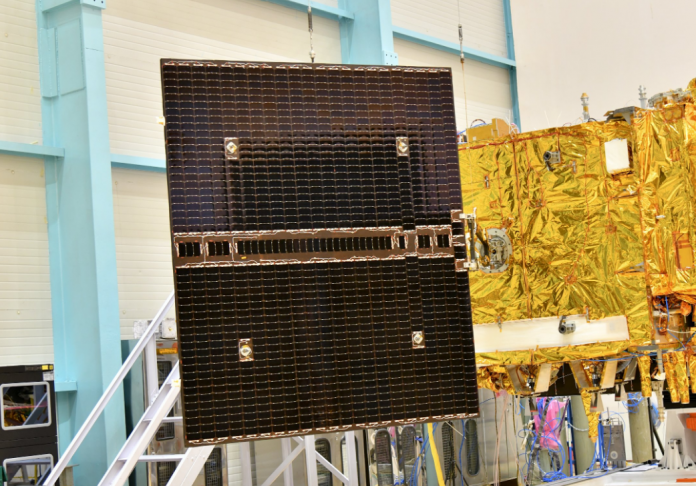After the sucessful launch of the Chandrayaan-3, the Indian Space Research Organisation (ISRO) is gearing up for another launch, India’s first mission to study the Sun. Aditya-L1 satellite is the first space-based Indian observatory to study the Sun.
The space agency on Monday said that the spacecraft was assembled and integrated at the UR Rao Satellite Centre (URSC) in Bengaluru and has arrived at Satish Dhawan Space Centre in Sriharikota in Andhra Pradesh.
“Aditya-L1, the first space-based Indian observatory to study the Sun ☀️, is getting ready for the launch. The satellite realised at the U R Rao Satellite Centre (URSC), Bengaluru has arrived at SDSC-SHAR, Sriharikota,” the ISRO said in a tweet.
PSLV-C57/Aditya-L1 Mission:
— ISRO (@isro) August 14, 2023
Aditya-L1, the first space-based Indian observatory to study the Sun ☀️, is getting ready for the launch.
The satellite realised at the U R Rao Satellite Centre (URSC), Bengaluru has arrived at SDSC-SHAR, Sriharikota.
More pics… pic.twitter.com/JSJiOBSHp1
The launch is likely to take place in August-end or September.
About Aditya-L1 Mission
According to ISRO, the spacecraft shall be placed in a halo orbit around the Lagrange point 1 (L1) of the Sun-Earth system, which is about 1.5 million km from the Earth. A satellite placed in the halo orbit around the L1 point has the major advantage of continuously viewing the Sun without any occultation/eclipses. This will provide a greater advantage of observing the solar activities, and its effect on space weather in real time.
The spacecraft carries seven payloads to observe the photosphere, chromosphere and the outermost layers of the Sun (the corona) using electromagnetic and particle and magnetic field detectors.
Using the special vantage point L1, four payloads directly view the Sun and the remaining three payloads carry out in-situ studies of particles and fields at the Lagrange point L1, thus providing important scientific studies of the propagatory effect of solar dynamics in the interplanetary medium
The suits of Aditya L1 payloads are expected to provide most crucial informations to understand the problem of coronal heating, coronal mass ejection, pre-flare and flare activities and their characteristics, dynamics of space weather, propagation of particle and fields.
The instruments of Aditya-L1 are tuned to observe the solar atmosphere mainly the chromosphere and corona. In-situ instruments will observe the local environment at L1. There are total seven payloads on-board with four of them carrying out remote sensing of the Sun and three of them carrying in-situ observation.
The major science objectives of Aditya-L1 mission are:
- Study of Solar upper atmospheric (chromosphere and corona) dynamics.
- Study of chromospheric and coronal heating, physics of the partially ionized plasma, initiation of the coronal mass ejections, and flares
- Observe the in-situ particle and plasma environment providing data for the study of particle dynamics from the Sun.
- Physics of solar corona and its heating mechanism.
- Diagnostics of the coronal and coronal loops plasma: Temperature, velocity and density.
- Development, dynamics and origin of CMEs.
- Identify the sequence of processes that occur at multiple layers (chromosphere, base and extended corona) which eventually leads to solar eruptive events.
- Magnetic field topology and magnetic field measurements in the solar corona.
- Drivers for space weather (origin, composition and dynamics of solar wind.





